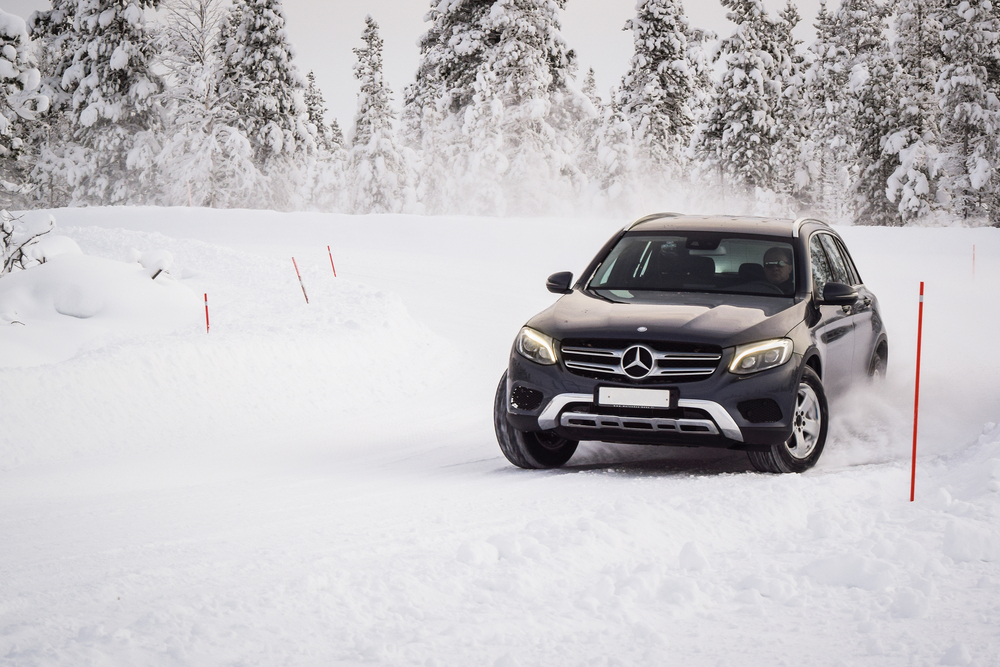The Most Common Winter Driving Accidents and How to Avoid Them
January 6, 2017 | in Defensive Driving Tips
Heavy winter storms have hit hard all over the nation, causing icy roads and dangerous driving conditions. When the conditions get rough, it’s critical to make driving defensively your number one priority. In order to hone your defensive driving skills, you’ll first need to know what the most common winter driving accidents are. Once we’ve exposed some of the most common issues and accidents, we’ll offer some tips on how you can avoid them and ride out the winter storms.
What are some of the most common winter driving accidents?
1) Rear-end collisions
It’s common to try to apply the brakes very quickly when you see a car in front of you slow down abruptly. While this may help you avoid a collision on a clear non-icy road, it actually increases your chances of an accident in dangerous winter conditions. Why? When your wheels stop moving very suddenly on a slick icy surface, you slide. Once you are in a slide, it can become very hard to regain traction and you’ll quickly find yourself smashing into the car ahead of you if you’re not careful.
How to avoid a rear-end collision
In order to avoid a rear-end collision on an icy road, you’ll want to at least double (or even triple) your following distance. Increasing your following distance allows you to apply the brakes slowly which helps your tires remain in contact with the ground. It also helps to drive slower. If you keep your speed down, you’ll stay in better control of your vehicle and you’ll also be able to slow your momentum without slamming on the brakes.
2) Collisions from lane drifting
Often, visibility during a winter storm can be extremely poor. Heavy snow storms and fog can make it difficult to see even a few feet in front and around your vehicle. Another common issue is that the roads themselves are covered in snow and lane lines are not visible. Without visible lines, it’s hard to know where you should be on the road, and drifting (often even unintentional) becomes prevalent. When you drift into another lane and clip another vehicle in the snow, things can get dicey. You may cause your car and theirs to spin out sometimes resulting in a multiple car collision.
How to avoid collisions from lane drifting
The best tip is to be very observant. Keep a close eye on where the other cars around you are. Even if you can’t see the lane lines, you can still maintain a safe distance from the cars ahead of and to the sides of you. Often there will be tracks from other cars that you can follow to gauge where you are. Be careful when getting out of the tracks, especially if you have a small car, as sudden changes from dryer to slushier areas can cause you to lose traction and slide.
3) Collisions from spinning out
Spinning out is common when the roads get slick, and it is incredibly dangerous. When you spin out, you completely lose control of your vehicle and your vehicle can be thrown about into other lanes of traffic. Once you have spun out, it’s nearly impossible to recover until you hit something that stops you.
How to avoid collisions from spinning out
If you start to skid or slip, steer in the direction of the skid. So if you’re turning right and your back wheels start skidding out to the left, you should turn your wheel slightly to the left. The idea is to ride out the skid. Slamming on your brakes is one of the worst things you can do during a skid. Stay calm and correct slowly. Throw your hazard lights on quickly if you start to lose control. Drive slowly, especially on turns.
Key Takeaways for Staying Safe
We’ve outlined three of the more common winter driving accidents and given some tips on how to avoid them. Remember, most importantly, that there are a few tips that apply to all winter driving. The biggest key is simply to SLOW DOWN! So many accidents would be avoided if people would just take their time and not be in a rush. Avoiding abrupt movements also helps, whether that’s applying the brakes quickly or suddenly jerking the steering wheel. Lastly, be sure to increase your following distance.
It’s always smart to prepare for emergencies and do all you can to stay safe in a winter storm. Keep an emergency roadside kit in your car. Make sure you have extra blankets and snacks and proper gear for staying warm in a storm should you get in an accident and have to wait for help. Stay smart and stay safe. Above all, drive defensively and you’ll be better able to weather any winter storm.
← Can You Turn Right on a Red Light in Texas? | Can You Get Pulled Over for Having One Headlight Out? →



